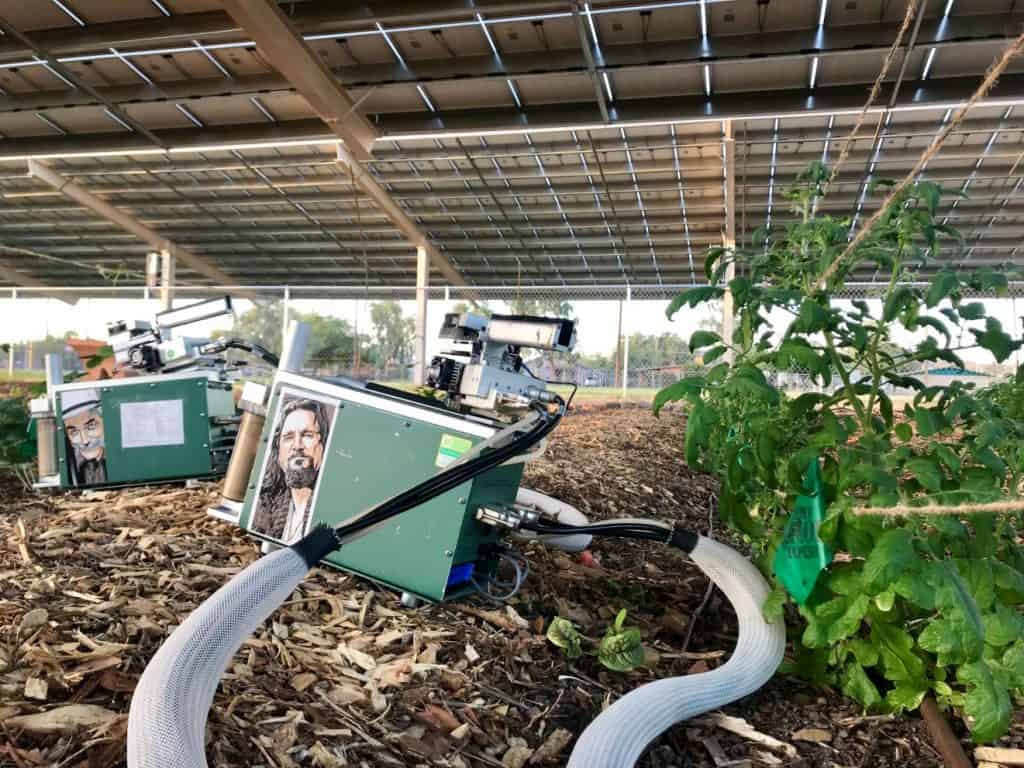This article written by Bill Gates offers us an amazing view into the future of energy. We’re reading about the creativity of scientists and engineers that are tackling the potential of the use of the energy that is available to us from the sun. Elon Musk’s team has done amazing work in two areas recently: the new launch of solar roof shingles that is scheduled for commercial release in April 2017, and his recent opening of a new solar battery manufacturing facility east of Los Angeles. Both of these will likely make an enormous contribution to breaking away from polluting fossil fuels.
But, there is a limitation with this approach – batteries with the most recent technology are only capable of storing energy in a relatively inefficient way. When compared with the energy that is available in fossil fuels (gasoline or natural gas), battery storage is somewhat crude.
This article offers a completely different approach to solar energy – making fuel from sunlight. The article is amazing! It could have been titled, The Power of an Idea. The creativity that you’ll experience will leave feeling hopeful. And, when you go outside, you’ll look up at the sun with a slightly different perspective.

The sun was out in full force the fall morning I arrived at Caltech to visit Professor Nate Lewis’s research laboratory. Temperatures in southern California had soared to 20 degrees above normal, prompting the National Weather Service to issue warnings for extreme fire danger and heat-related illnesses.
The weather was a fitting introduction to what I had come to see inside Nate’s lab—how we might be able to tap the sun’s tremendous energy to make fuels to power cars, trucks, ships, and airplanes.
Stepping into the lab cluttered with computer screens, jars of chemicals, beakers, and other equipment, Nate handed me a pair of safety goggles and offered some advice for what I was about to see. “Everything we do is simple in the end, even though there’s lots of complicated stuff,” he said.
What’s simple is the idea behind all of his team’s research: The sun is the most reliable, plentiful source of renewable energy we have. In fact, more energy from the sun hits the Earth in one hour than humans use in an entire year. If we can find cheap and efficient ways to tap just a fraction of its power, we will go a long way toward finding a clean, affordable, and reliable energy source for the future.
We are all familiar with solar panels, which convert sunlight into electricity. As solar panel costs continue to fall, it’s been encouraging to see how they are becoming a growing source of clean energy around the world. Of course, there’s one major challenge of solar power. The sun sets each night and there are cloudy days. That’s why we need to find efficient ways to store the energy from sunlight so it’s available on demand.
Batteries are one solution. Even better would be a solar fuel. Fuels have a much higher energy density than batteries, making it far easier to use for storage and transportation. For example, one ton of gasoline stores the same amount of energy as 60 tons of batteries. That’s why, barring a major breakthrough in battery technology, it’s hard to imagine flying from Seattle to Tokyo on a plug-in airplane.
I’ve written before about the need for an energy miracle to halt climate change and provide access to electricity to millions of the poorest families who live without it. Making solar fuel would be one of those miracles. It would solve the energy storage problem for when the sun isn’t shining. And it would provide an easy-to-use power source for our existing transportation infrastructure. We could continue to drive the cars we have now. Instead of running on fossil fuels from the ground, they would be powered by fuel made from sunlight. And because it wouldn’t contribute additional greenhouses gases to the atmosphere, it would be carbon neutral.
Imagining such a future is tantalizing. Realizing it will require a lot of hard work. No one knows if there’s a practical way to turn sunlight into fuel. Thanks to the U.S. Department of Energy, Nate and a group of other researchers around the U.S. are receiving research support to find out if it is possible.
We live in a time when new discoveries and innovations are so commonplace that it’s easy to take the cutting-edge research I saw at Caltech for granted. But most breakthroughs that improve our lives—from new health interventions to new clean energy ideas—get their start as government-sponsored research like Nate’s. If successful, that research leads to new innovations, that spawn new industries, that create new jobs, that spur economic growth. It’s impossible to overemphasize the importance of government support in this process. Without it, human progress would not come as far as it has.
Nate and his team are still at the first stage of this process. But they have reason to be optimistic about what lies ahead. After all, turning sunlight into chemical energy is what plants do every day. Through the process of photosynthesis, plants combine sunlight, water, and carbon dioxide to store solar energy in chemical bonds. At Nate’s lab, his team is working with the same ingredients. The difference is that they need to figure out how to do it even better and beat nature at its own game.
“We want to create a solar fuel inspired by what nature does, in the same way that man built aircraft inspired by birds that fly,” Nate said. “But you don’t build an airplane out of feathers. And we’re not going to build an artificial photosynthetic system out of chlorophylls and living systems, because we can do better than that.”
One of Nate’s students showed me how light can be used to split water into oxygen and hydrogen—a critical first step in the path to solar fuels. The next step would involve combining hydrogen with carbon dioxide to make fuels. Using current technologies, however, it is too costly to produce a fuel from sunlight. To make it cheaper, much more research needs to be done to understand the materials and systems that could create a dependable source of solar fuel.
One idea his team is working on is a kind of artificial turf made of plastic cells that could be easily rolled out to capture sunlight to make fuel. Each plastic cell would contain water, light absorbers, and a catalyst. The catalyst helps accelerate the chemical reactions so each cell can produce hydrogen or carbon-based fuels more efficiently. Unfortunately, the best catalysts are among the rarest and most expensive elements, like platinum. A key focus of Nate’s research is finding other catalysts that are not only effective and durable, but also economical.
Nate’s interest in clean energy research started during the oil crisis in the 1970s, when he waited for hours in gas lines with his dad. He says he knew then that he wanted to dedicate his life to energy research. Now, he is helping to train a new generation of scientists to help solve our world’s energy challenge. Seeing the number of young people working in Nate’s lab was inspiring. The pace of innovation for them is now much faster than ever before. “We do experiments now in a day that would once take a year or an entire Ph.D. thesis to do,” Nate said.
Still, I believe we should be doing a lot more. We need thousands of scientists following all paths that might lead us to a clean energy future. That’s why a group of investors and I recently launched Breakthrough Energy Ventures, a fund that will invest more than $1 billion in scientific discoveries that have the potential to deliver cheap and reliable clean energy to the world.
While we won’t be filling up our cars with solar fuels next week or next year, Nate’s team has already made valuable contributions to our understanding of how we might achieve this bold goal. With increased government and private sector support, we will make it possible for them to move ahead with their research at full speed.
Article by Bill Gates
Co-chair, Bill & Melinda Gates Foundation
This originally appeared on gatesnotes.com.


